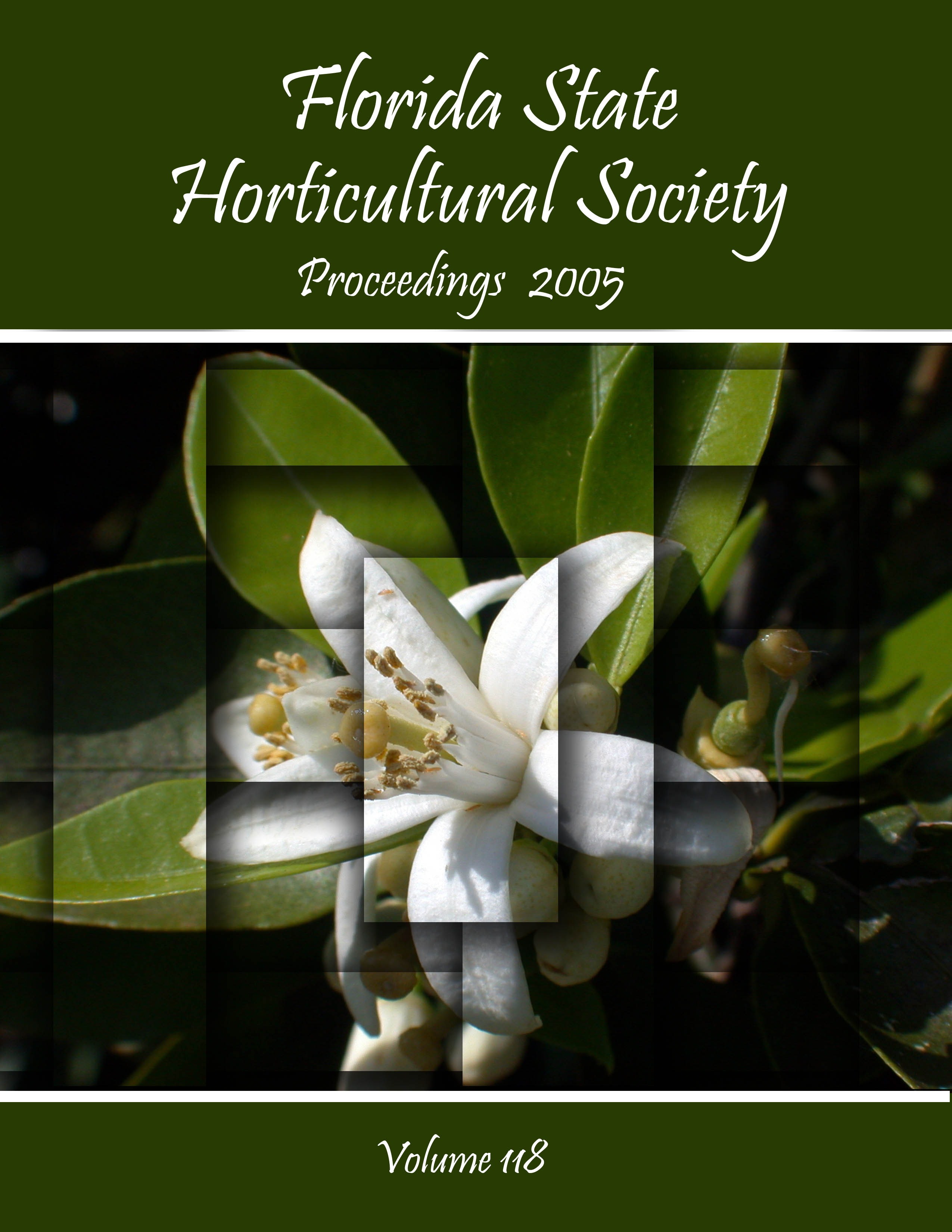Abstract
Soil fumigation products were evaluated for potato production (Solanum tuberosum L. var. 'Vivaldi') at the Plant Science Research and Education Unit in Hastings, Florida. Fumigation factor treatments were no fumigation, 1,3-dichloropropene (1,3-D, Telone II, 53 L a.i./ha, conventional treatment), chloropicrin (PIC, 45, 67 and 90 kg a.i./ha); chloropicrin + solvent (PIC + solvent, Pic-Plus, 45, 67, 90 kg a.i./ha). Application method factor treatments were single shank and double sweep. Bed preparation factor treatments were non-pressed and pressed. Potatoes were planted on 10 Feb and harvested 26-27 May, 2004. Potato plants in all PIC + solvent rates produced significantly more total and marketable production compared to the 1,3-D treatment (current standard, 40.5 MT·ha[sup-] total yield). There was no rate of PIC at which plants produced significantly more total or marketable yield than the 1,3-D treatment. There was no significant difference in total or marketable yield from plants in the 1,3-D and the no fumigant treatment or between the PIC and PIC + solvent treatments at equal rates. Application method had no significant effect on tuber yield or size distribution of tubers. However, pressing the bed significantly improved both total and marketable tuber yield, improved tuber size, and reduced the percent culls. None of the factor interactions was significant. Percent of tuber surface covered with scab/scurf in no fumigant, 1,3-D, and PIC + solvent (67 kg a.i./ha) treatments was 36, 27%, and 1.7% respectively. PIC + solvent treatments improved overall appearance of the tubers at lower rates than PIC treatments.

